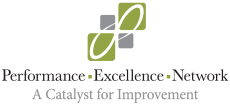Perfect Vision: The Power of Leading Indicators to Predict Future Outcomes
September 26, 2013
Perfect Vision: The Power of Leading Indicators to Predict Future Outcomes
Although our beloved Minnesota Twins are suffering a third straight year without playoff baseball, many pennant races are in the final stretch. In channel surfing a couple of nights ago, I caught some of the Texas/Kansas City ball game, in which the Rangers pitcher, Matt Garza (yes, a former Twin), was pitching a masterful shutout into the eighth inning, but his pitch count was his highest of the year (122). So the commentators were debating whether Texas should leave Garza in to pitch the ninth (given how strong he looked, there was a solid argument for doing so) or put in a relief pitcher from the bullpen – a fresh arm to try to close out the game. You see: current baseball practice is to remove starting pitchers after pitch counts get into the 100s, because higher pitch counts lead to fatigue and possibly injury.
So what in the world does this have to do with the performance of your organization? This baseball example is a great illustration of how leading indicators (pitch count) can help predict outcomes (fatigue, injury, and possible game loss). Finding the right leading indicators for any process is a powerful way to significantly improve decision making…
First, I probably should offer a quick definition: I define a “leading indicator” as a metric that can be used to predict future performance. Leading indicators are forward-looking and relate to in-process measures that help us gauge eventual process outcomes. For example, think of how the amber traffic light indicates the coming of the red light. Amber is the leading indicator (with nearly 100% predictive certainty!) that a red light is approaching.
On the other hand, “lagging indicators” generally relate to outcomes, output, and/or impact – what a process produced. They are historical in nature, telling you how your process performed in the past. Back to our traffic light example: the amber light is a lagging indicator for the green light because amber trails green (and the red light is a lagging indicator of the amber light). The importance of a lagging indicator is its ability to confirm that a pattern is occurring, or about to occur, which allows you to validate your hypothesis about how leading and lagging indicators correlate.
So the trick is to find leading indicators that better predict a process’s eventual outcomes. If you can do that, you can formulate cause and effect hypotheses, which allow you to improve decision making by focusing on the factors that lead to eventual desired outcomes. More on that in a minute, but a few non-business examples might be illustrative (if you’re not a sports enthusiast, you can skip this part and move to the next section!)…
The power for predictive leading indicators in sports has been around for decades. In fact, Jonah Keri, editor of the 2006 book “Baseball Between the Numbers,” claims: “In the numbers-obsessed sport of baseball, statistics don’t merely record what players, managers, and owners have done. Properly understood, they can tell us how the teams we root for could employ better strategies, put more effective players on the field, and win more games.”
In short, the power of statistics – of using leading indicators to try to predict future outcomes – can give sports managers and coaches an edge over their competition. (See the parallels to business??)
Consider some of these examples of leading indicators in sports:
- In professional football, the data indicate teams should go for a two-point conversion after a touchdown (instead of the one-point kick attempt) when down by two points, five points, 10 points, or 13 points in the fourth quarter. Why? Because a successful two-point conversion would pull the trailing team within one score of tying the game. And why only in the fourth quarter? Because earlier in the game teams have more opportunities to score more than one time, and the increased risk of “going for two” does not usually pay off at those points in the game. In other words, statistics show that “going for two” earlier in the game does not usually provide the desired outcome of tying the game.
- Also in football, there is considerable data to support the notion of kicking a field goal when facing a fourth down situation on the road, especially if the yards to go for a first down is beyond two. Why? There are many factors which are said to play into “home field advantage” in football (crowd noise being the primary), and the data show that teams on the road should try for the higher probability field goal (and three points) than the lower probability fourth down conversion and a chance for an eventual touchdown (and six points)…obviously all things being equal (weather, game momentum, where they are on the field, and so forth).
- In basketball, it is wise to foul our opponent if you are trailing with less than one or two minutes to play. Why? Because the clock stops, saving precious time for the team that is trailing, and there is of course the chance that the leading team will miss one or both free throws. Statistics show that trailing teams have a better chance to catch up by fouling than by playing out the time (which is why basketball games take 10 minutes to play the last two!).
- In all sports, it’s common now to review video of your opponent. Why? Not only do you want to prepare by seeing your opponent’s general tendencies, but you can begin to calculate statistics that generalize patterns of their behavior. For example, if your opponent is faced with a certain set of circumstances (third down and many yards to go in football, for example), what plays do they generally call – do the run or do they pass? And if they pass, do they favor a particular player, a particular side of the field for different blocking schemes, in the middle or down the sidelines, and so forth? If you can analyze the historic patterns, you can formulate predictive hypotheses about their future behavior, and then make decisions about how you might respond – probably producing better outcomes for your team.
- And the one we’ve already mentioned: in baseball, managers should remove starting pitchers generally after pitch counts exceed 100. Why? Because statistics show a strong correlation between high pitch counts and overuse injuries: pitch counts are a leading indicator to injury – obviously an outcome that baseball teams want to avoid. The data show that a “fresh” arm coming in from the bullpen also generally has better outcomes than a pitcher that has been in the game quite a while, because he’s rested and because he usually offers different types of throws than the pitcher before, which presents challenges to opposing batters.
And the list certainly could go on.
Now, think of everyday occurrences where leading indicators help predict eventual outcomes:
- Exit polls as a leading indicator to election results.
- Body mass as a leading indicator to diabetes.
- Tobacco use as a leading indicator to various forms of disease.
- Seat belt use as a leading indicator to fatal car accidents.
- High school GPA and test scores as leading indicators to college GPA (though the predictive correlation of these measures has been debated a bit).
- Job references and previous career accomplishments as leading indicators to future career successes.
- Housing starts, production, unemployment insurance claims, and inventory levels all as a leading indicators to economic growth. (Interestingly, unemployment rates are usually said to be lagging indicators, because a rising unemployment rate usually indicates that the economy has been doing poorly, or vice-versa.)
- Money supply as a leading indicator to inflation.
- Consumer confidence as a leading indicator of economic growth.
And this one you’ll really enjoy…Alan Greenspan, the retired Federal Reserve Chairman often cited for his wisdom in setting monetary policy that lead to nearly 20 years of economic growth, claimed to use a bizarre leading indicator to determine the health of the economy: sales of men’s underwear. He said there was nearly a perfect correlation between the two variables, with underwear sales leading the general economy (presumably men don’t “invest” in new underwear if we are heading for a downturn).
So let’s bring it back to improvement within your organization. We all know the value of measuring performance in an organization. And I think we all know the value of trying to gauge performance in a comprehensive way, considering outcomes not just of financials but also customer/stakeholder-related results, workforce-related results, operational results, product/service-related results, and leadership-related results. This is why balanced scorecards and organizational dashboards are so popular today.
But I suggest that organizations use a mix of leading and lagging indicators, so that they have the ability to predict the potential outcomes of their key metrics – or at least to formulate cause and effect hypotheses of what measures relate to others. For some examples:
- Does reducing error rates of Process Y yield increases in customer satisfaction for that product?
- Does reducing waste of Process X yield improvements the financial margin of your product?
- Does improving teacher effectiveness (through training, better technology, or any other number of strategies) yield improvement in student test scores or graduation rates?
- Does implementing an Electronic Medical Record yield a reduction of medical errors and/or a reduction in diagnosis cycle times?
- Does investing in training of Content Z yield increases in productivity, workforce satisfaction, reduction in error rates, or any number of operational outcomes?
- Does pursuing growth Strategy A yield increases in sales or market share in a particular segment?
The examples are nearly endless. As I mentioned earlier, the trick is to find leading indicators that accurately predict a process’s eventual outcome(s). If you can do that, think of the benefit to organizational leaders in terms of:
- better data-based decision making,
- better response to poor performance (because you can anticipate sooner when outcomes may turn unfavorable), and
- an acquired ability to formulate cause and effect hypotheses that can then be tested, adjusted, and improved!
With iteration and cycles of evaluation, continuing to analyze the relationship between leading and lagging indicators allows you to build an infrastructure that supports a truly adaptive, learning organization.
Today’s organizations are so highly complex, with so many (controllable and uncontrollable) variables, having a way to cut through this complexity with better metrics – including a blend of leading indicators and lagging outcome metrics – allows leaders to make better decisions and allows organizations to have better, more predictable outcomes.
Yours in Performance Excellence,
Brian S. Lassiter
President, Performance Excellence Network (formerly Minnesota Council for Quality)
www.performanceexcellencenetwork.org
http://twitter.com/LassiterBrian
[A version of this article originally ran in the Oct 2010 PEN newsletter.]

